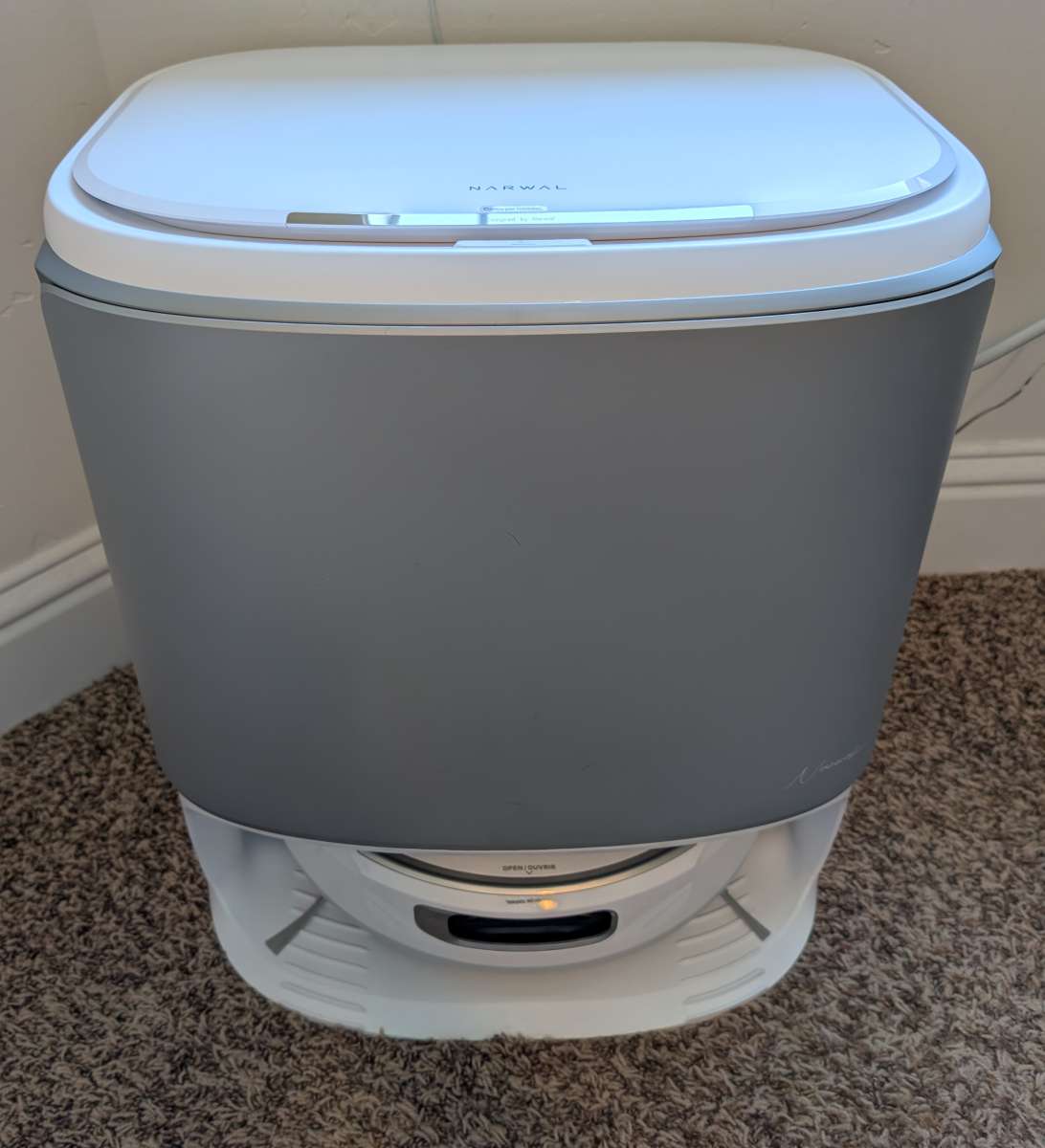
REVIEW – I’m all for cleaning gadgets and love to try out new tools. I have a robot vacuum/mop combo that I’ve used in the past that did pretty well at vacuuming but kinda struggled to do any serious mopping. The Narwal Flow came to my attention and the design of the mop functions was much more robust than what I’d used before, so I had to check it out and see how it compared. Read on to see how it has held up!
⬇︎ Jump to summary (pros/cons)
Price: $1499.99
Where to buy: Narwal and Amazon ($200 coupon currently available)
What is it?
The Narwal Flow is a robot vacuum/mop with a large base that stores the cleaning fluid, dirty water, and the dirt and debris that have been vacuumed up.
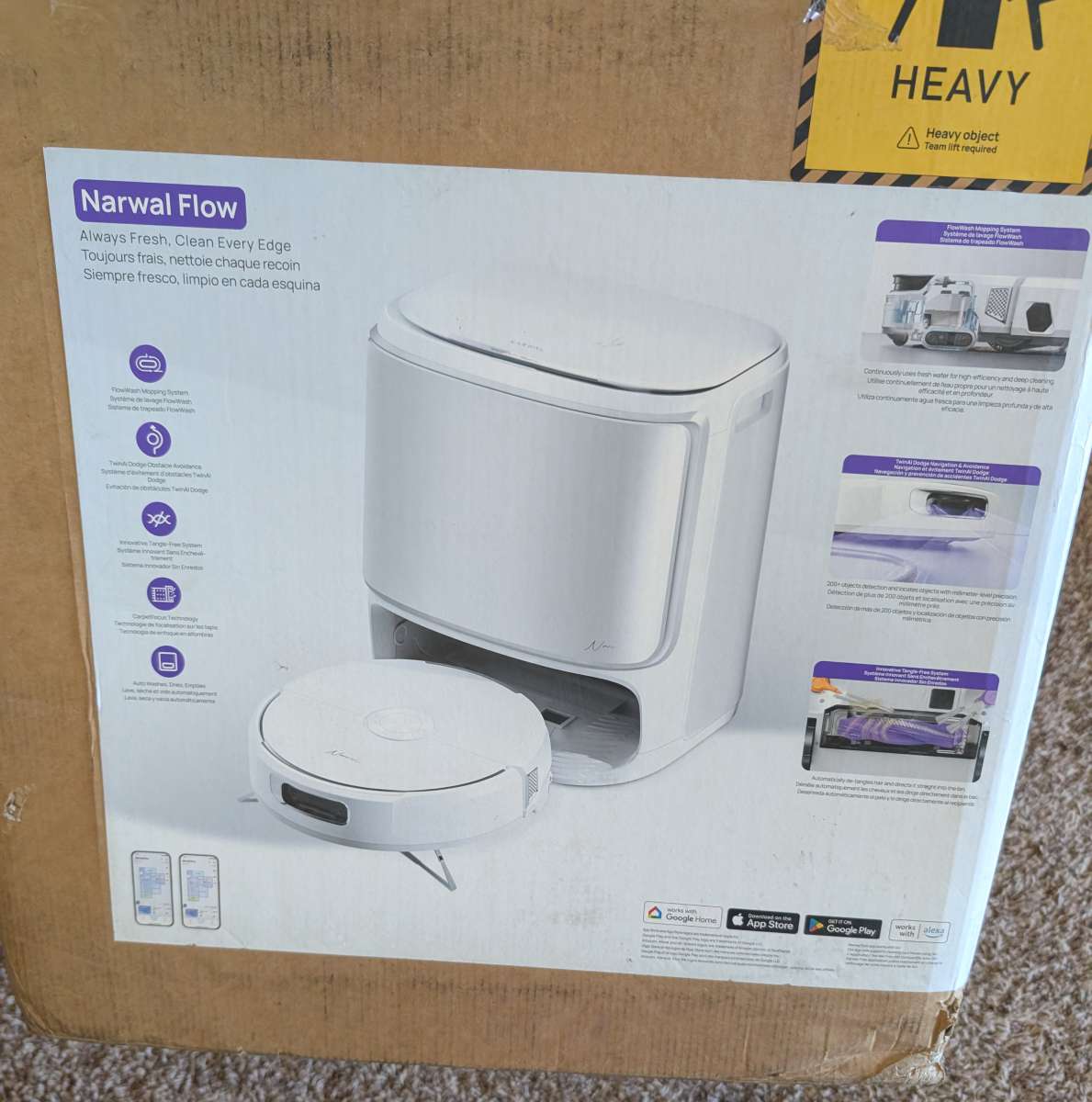
What’s included?
- Robot Vacuum
- Dust Collection Bin (Including Inner Bin &
HEPA Filter) - Base Station
• Cleaning Tray
• Clean Water Tank
• Waste Water Tank - Accessories
• Anti-Tangle Side Brushes (Left and Right)
• Power Cable
• User Manual
• Base Station Dust Collection Bags (2)
• Inner Dust Collection Bin
• HEPA Filter
• Replaceable Base Station Cleaning Filter
• 200ml Cleaning Solution
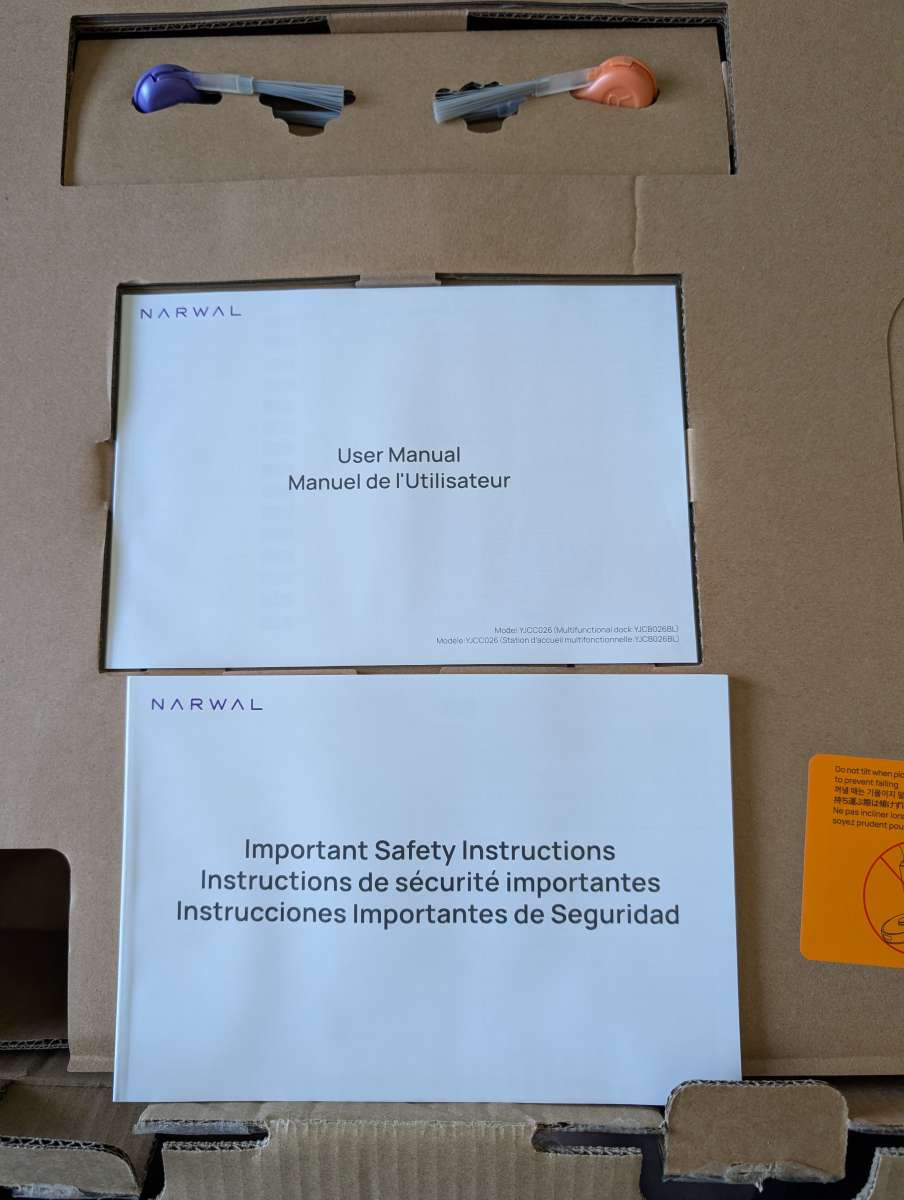
Tech specs
- Mopping Water Temperature 113°F
- Suction Power 22,000Pa
- Zero-Tangling Roller Brush
- Dual RGB Cameras
- Detects 200+ Objects
- Interaction Supports Alexa, Google Home, Siri, Matter
- Self Emptying Base
- Tank: 2.5L
- Auto Mop Washing 113-167°F
- Auto Tank Refilling
- Hot-Air Drying
- Robot Height 95mm (3.7in)
- Battery Capacity 6,400mAh
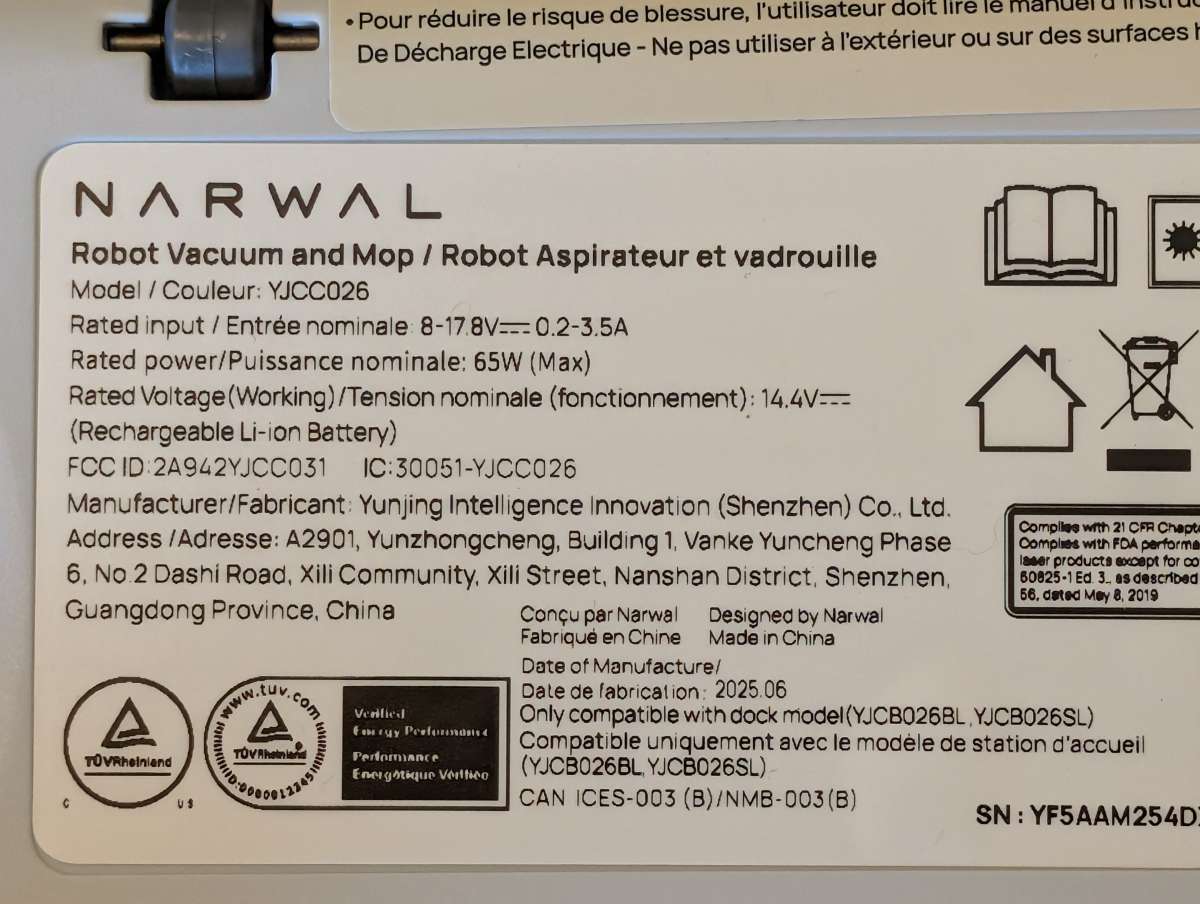
Design and features
The total package for this robot vacuum/mop is impressive and has a pretty big footprint compared to a lot of other robot vacuums I’ve seen. The base contains two separate tanks for the mop system, one for clean water with detergent and one for dirty water that it gathers up. It also has a separate dust/dirt catcher to collect all of the material that the vacuum gathers up and delivers to the base. The dust/dirt bag is pretty cool in that it has a sliding block so that when you need to clean things out you can close it and not get dirt and dust everywhere.

The included air filters are all removeable and replaceable. They are easy to access on the robot and have clear instructions included.
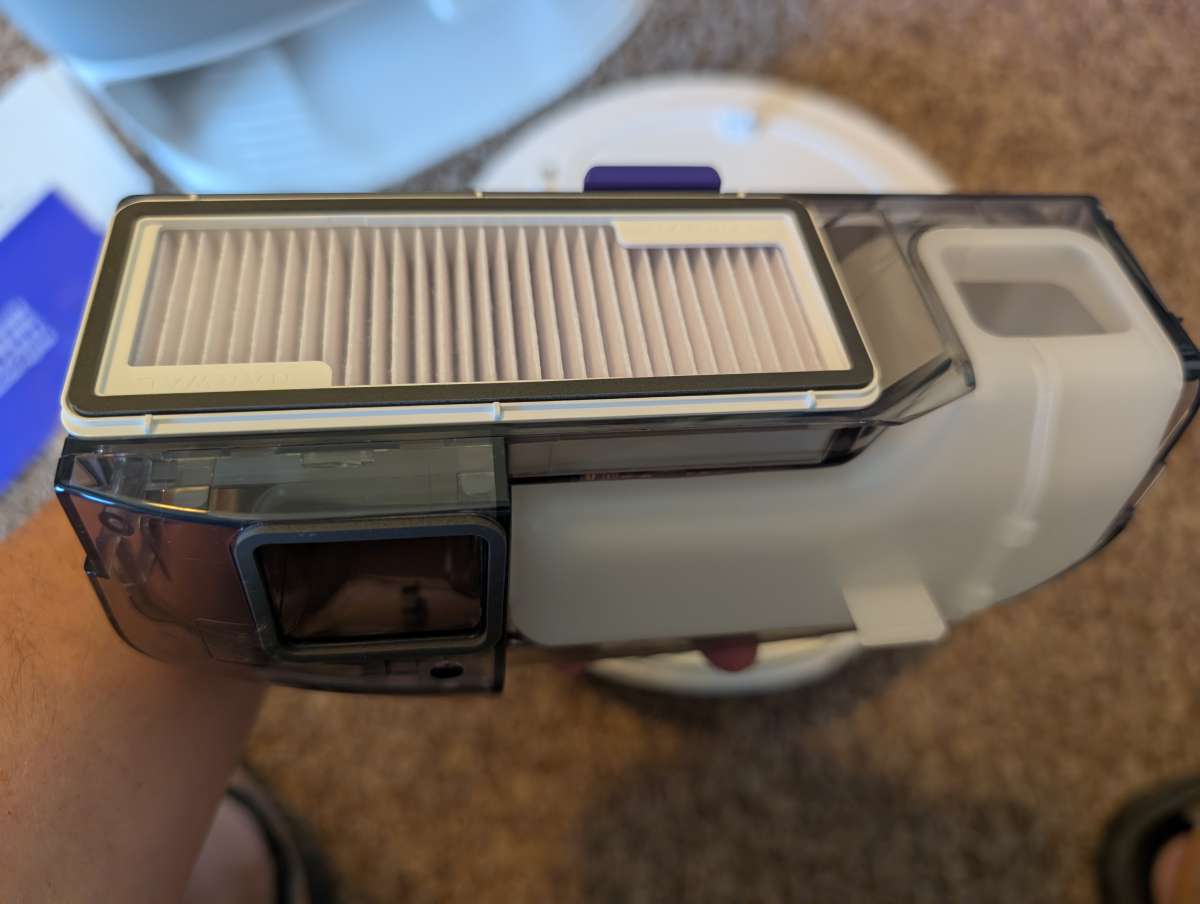

The front cameras and lights.
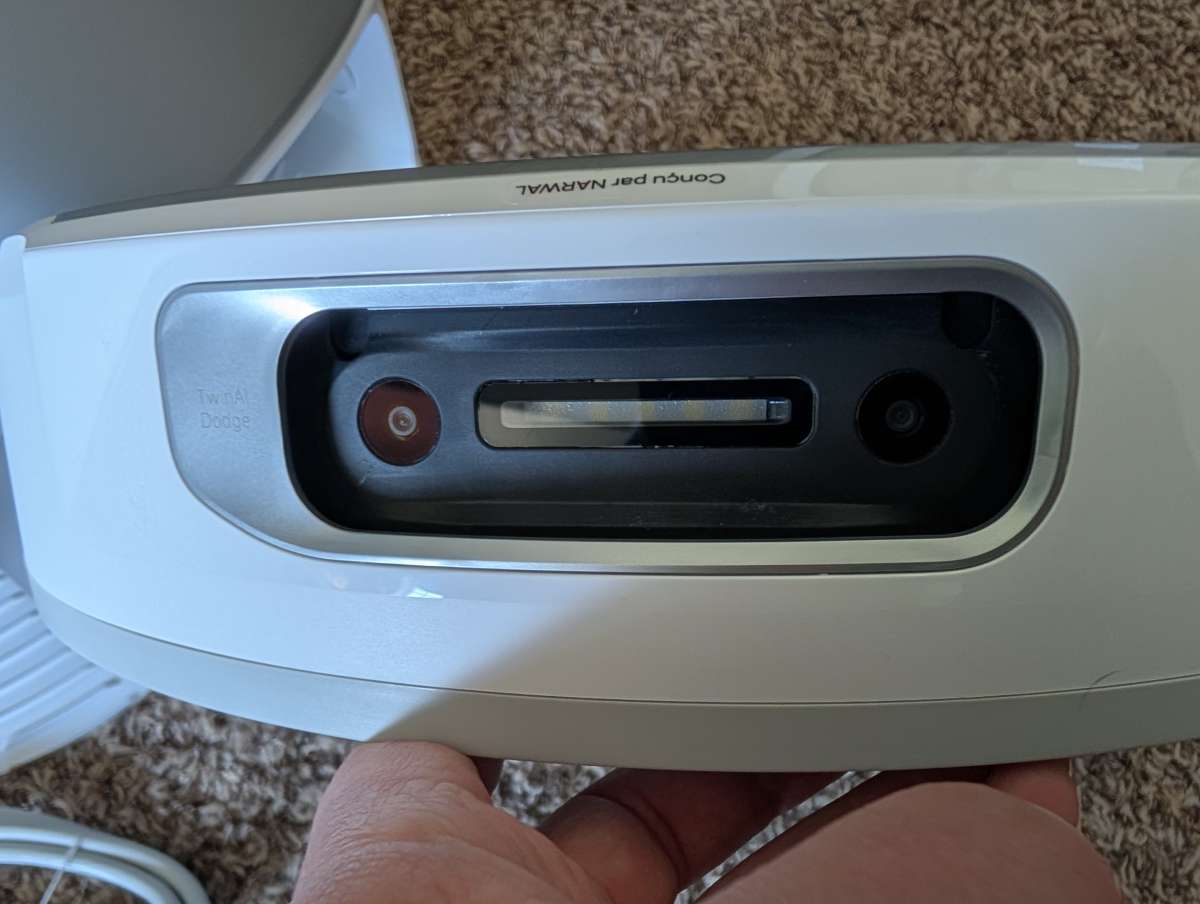
Assembly and Setup
Setup is fairly straightforward and documented well in the quick-start guide.
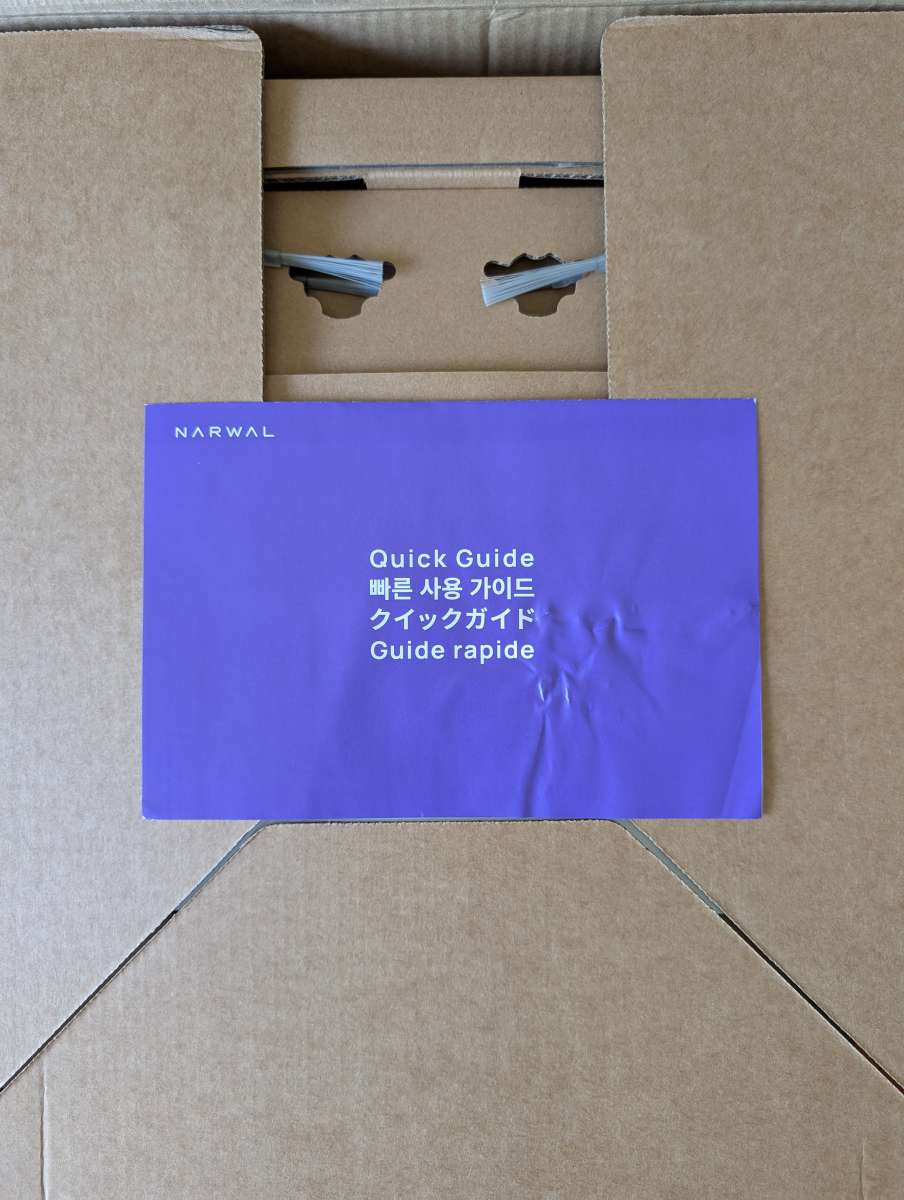
First step was installing the side brushes for cleaning edges and corners. Each was labeled L/R and color coded, so very easy to attach.
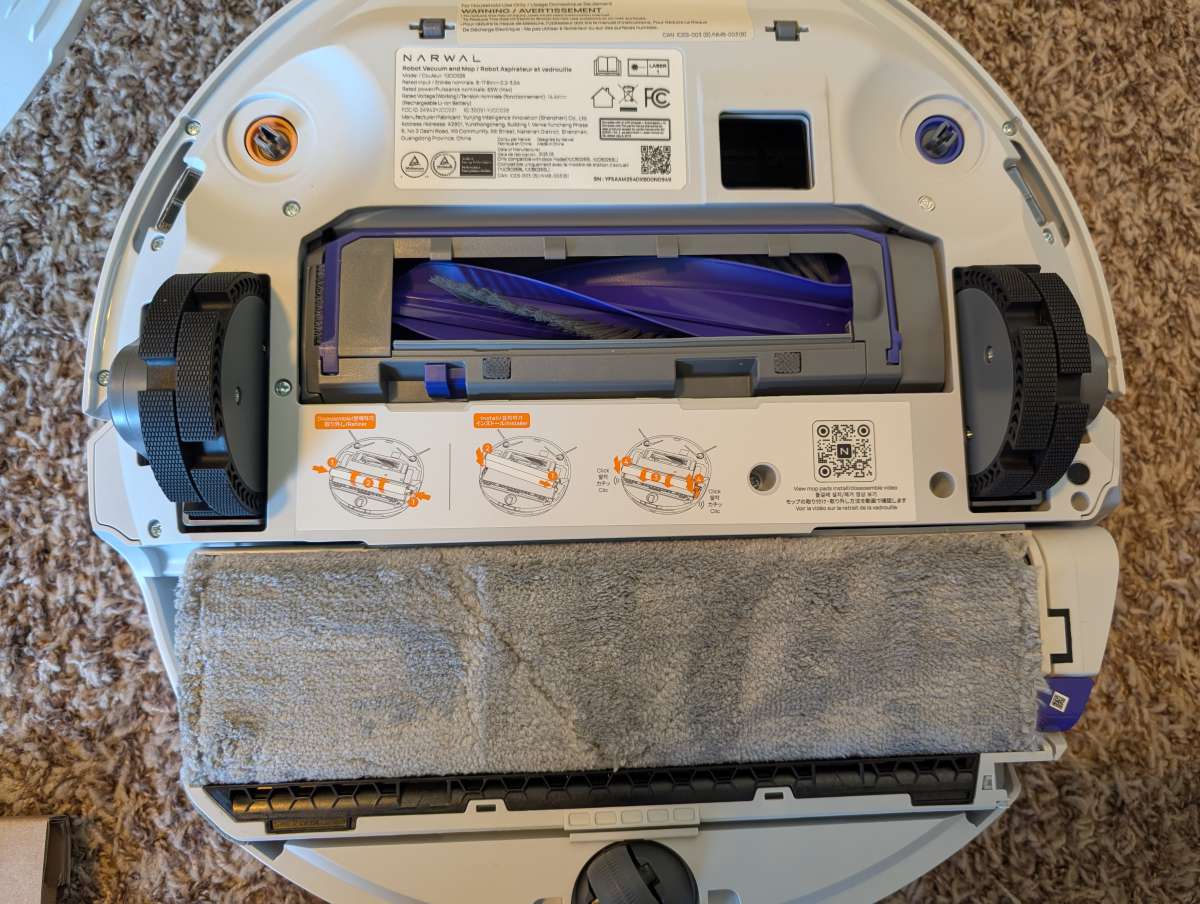
Second, remove the foam pieces that protect the front bumper from moving during shipping.
Third, remove the paper trays in the bay that the robot unit docks in. Putting the robot in is actually step 8, but I don’t think it matters that much.
Fourth step, plug it in. If the robot is docked, it will start charging now.
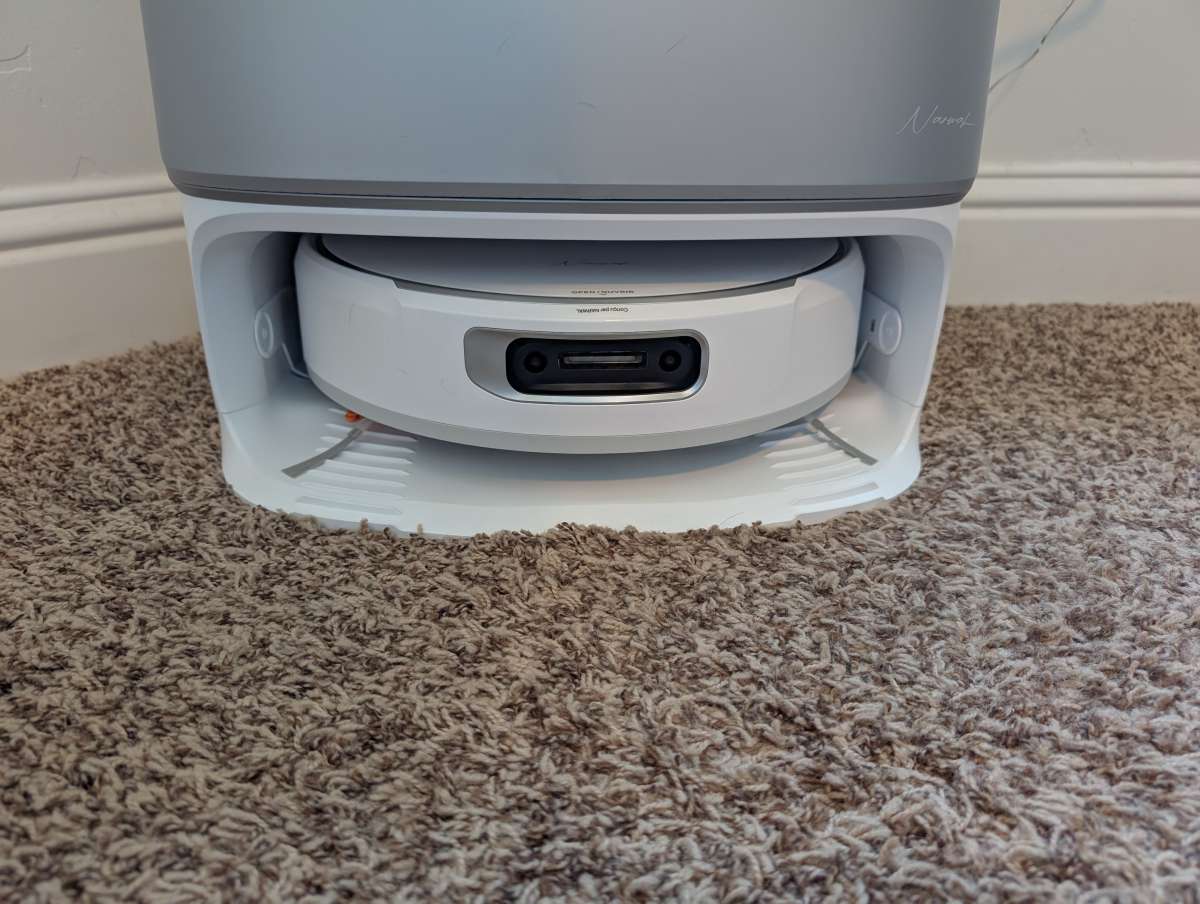
Fifth, insert the dust bag into the front of the base. You have to remove the front plate, but it pops off easily and is held on with magnets.
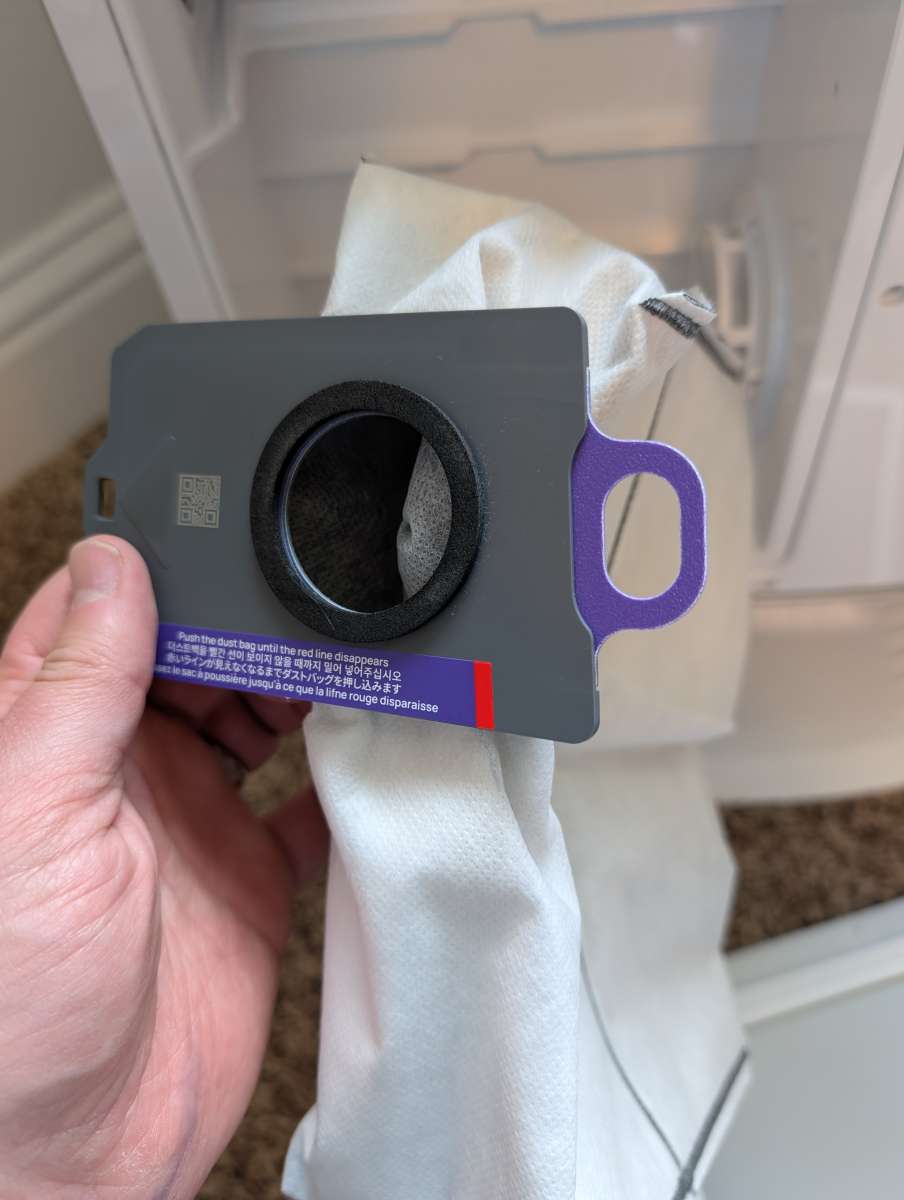
Fifth and sixth steps are filling the clean water tank and adding the supplied detergent.
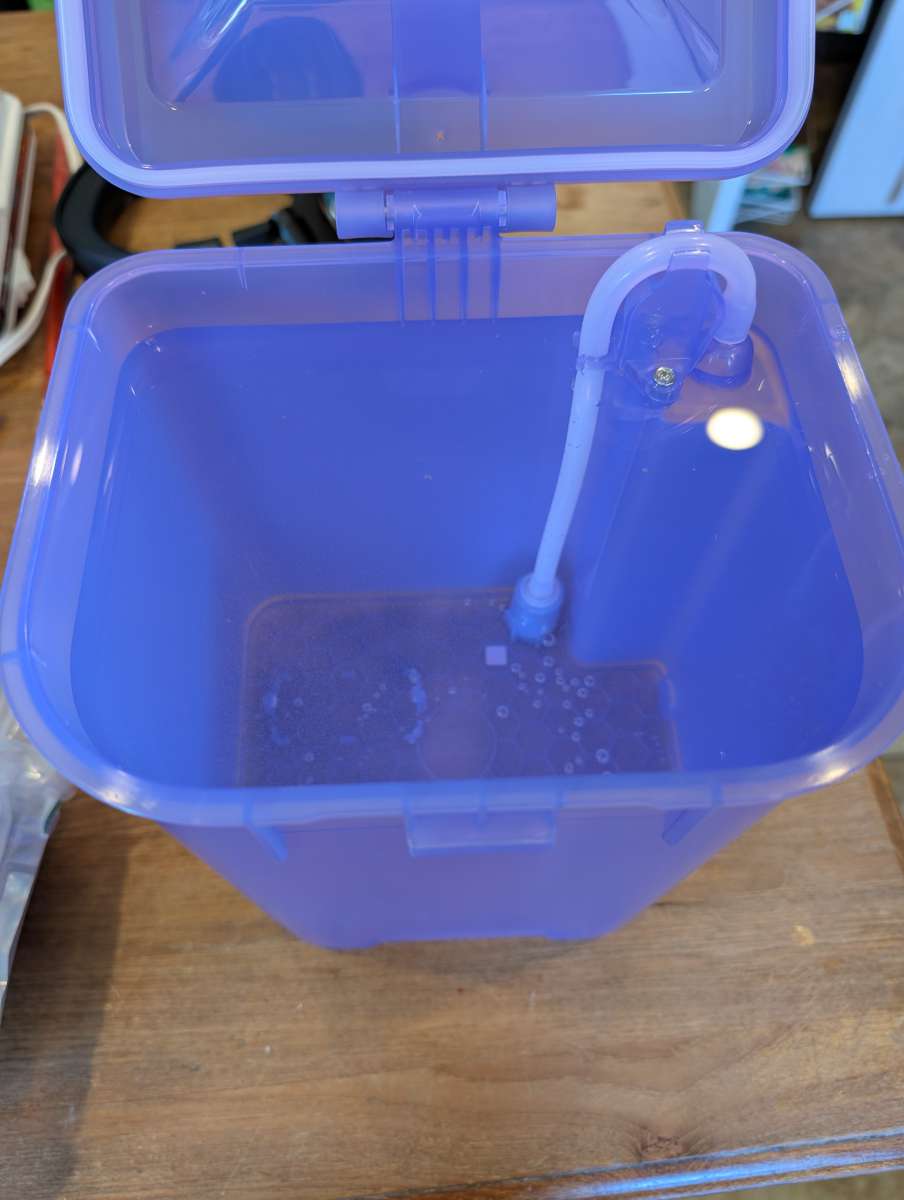
Final step is to insert the robot into the base, but if you’re reading my instructions you probably already did that. Now you just need to charge wait to charge the base.
Installing the app was pretty simple. It’s available on both Android and iOS stores. After initial login, you can add your device by scanning the code on the bottom or putting it into search by pressing the top button on the robot.

The app has access to a bunch of different options and reports after completion.
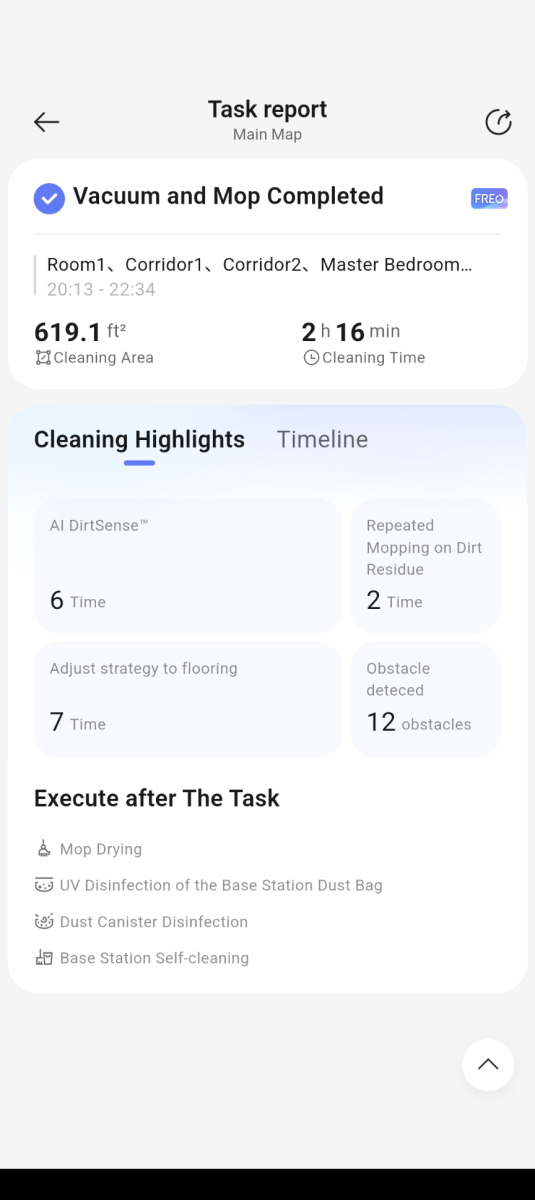
Performance
The initial mapping of the house was fascinating to watch. You can see in the clip below as it goes through and is just getting its bearing and creating the topographical map. It will proceed and map out wherever it has easy access to. If there are any areas you don’t want it to go, you can designate those on the map it generates on the app or you need to make sure that you close the door to that area.
Mapping shows up on the app with all of the different areas and floor types that it detects.
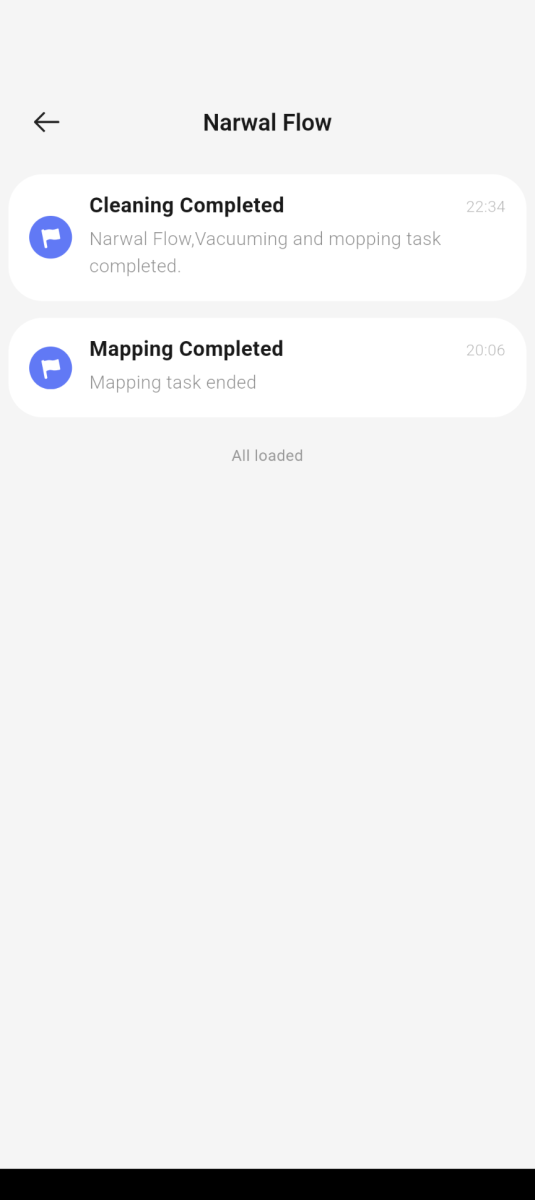
The app also allows you to edit and rename the different areas that it maps out, split rooms, mark off areas that are off-limits, and a bunch of other functions.
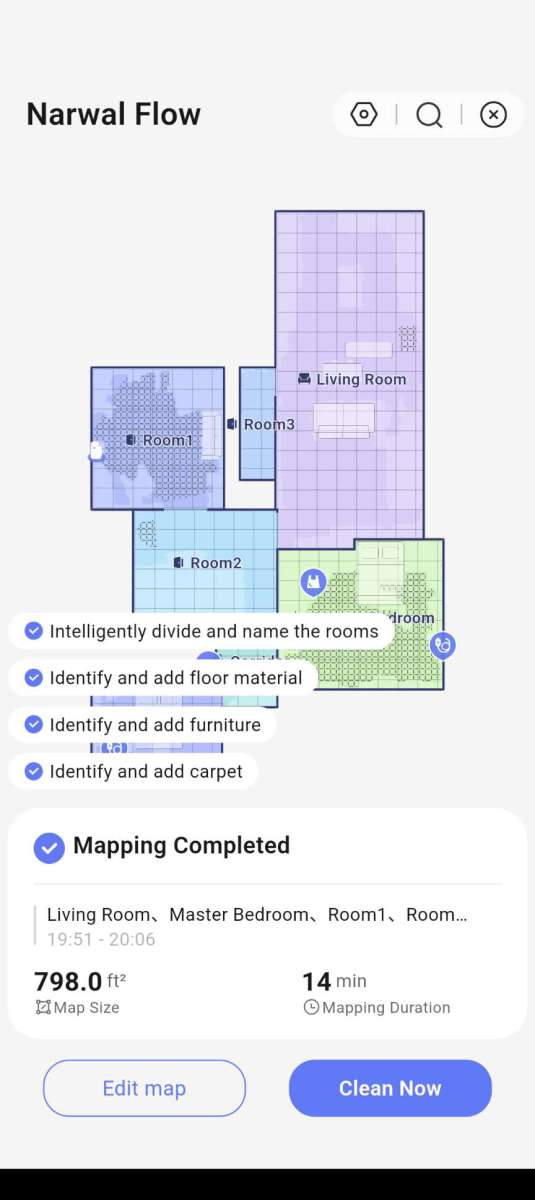
Perhaps the functionality I was most excited to see with this robot was the mopping function. I was seriously impressed by the amount of dirt it picked up and how it stored it all. All too often, when mopping, I feel like I’m just moving dirt around the floor, even if I frequently rinse.
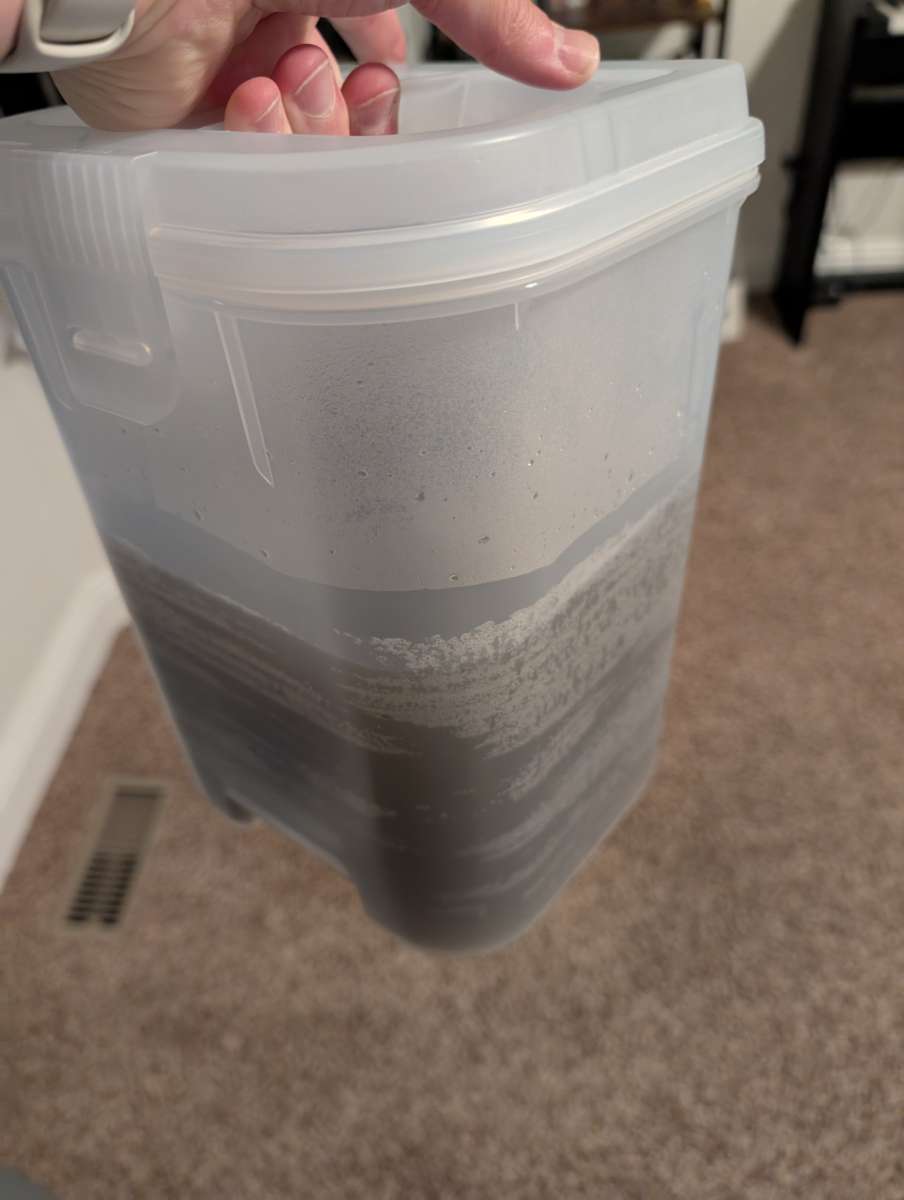
Final thoughts
I love the Narwal Flow robot vacuum/mop. The amount of dirt that it picks up is incredible and the floors look amazing after mopping. It did get stuck once and I had to go rescue it, but that was because one of my kids put a stool in an awkward spot and once I moved it the robot had no further issues. The base is pretty big, but given the amount of water that it stores that makes total sense. The system also has a warm air drying function for after the mop is used to prevent things from getting mildewy. I would definitely recommend this mop to anyone willing to spend an extra for the added functionality and storage.
What I like about the Narwal Flow vacuum
- Fantastic mopping and storage of dirty water when it’s done
- Quiet operations
- Very well-thought out design and access for emptying dirt and wastewater
What needs to be improved?
- Needs a horn accessory to be a true narwhal. (Jokes aside, I can’t think of anything)
Price: $1499.99
Where to buy: Narwal and Amazon ($200 coupon currently available)
Source: The sample of this product was provided for free by Narwal. Narwal did not have a final say on the review and did not preview the review before it was published.
Check out these other vacuum reviews!
- Ecovacs DEEBOT X11 OMNICYCLONE vacuum/mop review – The robot vac/mop game has changed
- UWANT D100 wet & dry vacuum cleaner review – The mop dries itself!
- Eureka ReactiSense 440 stick vacuum review


